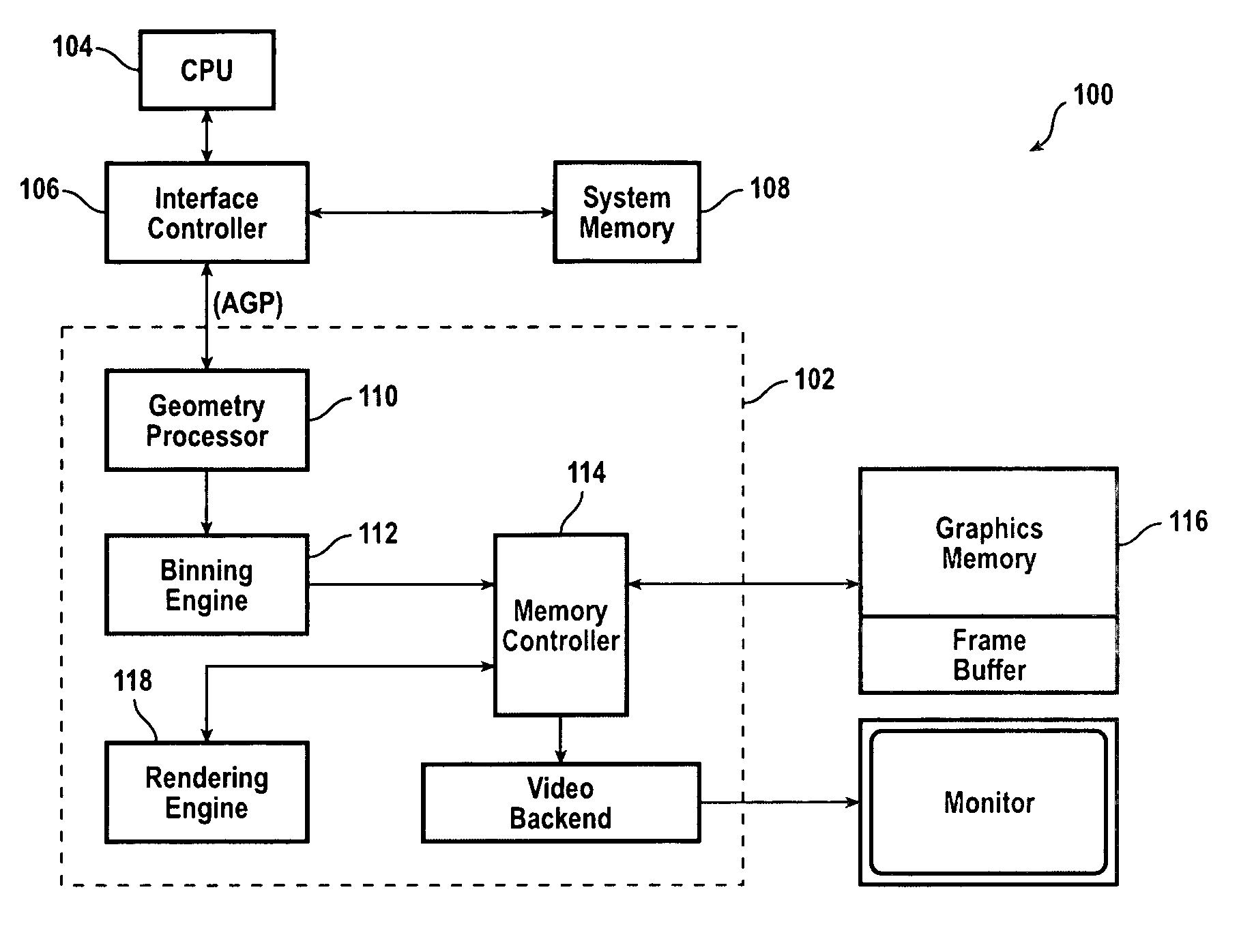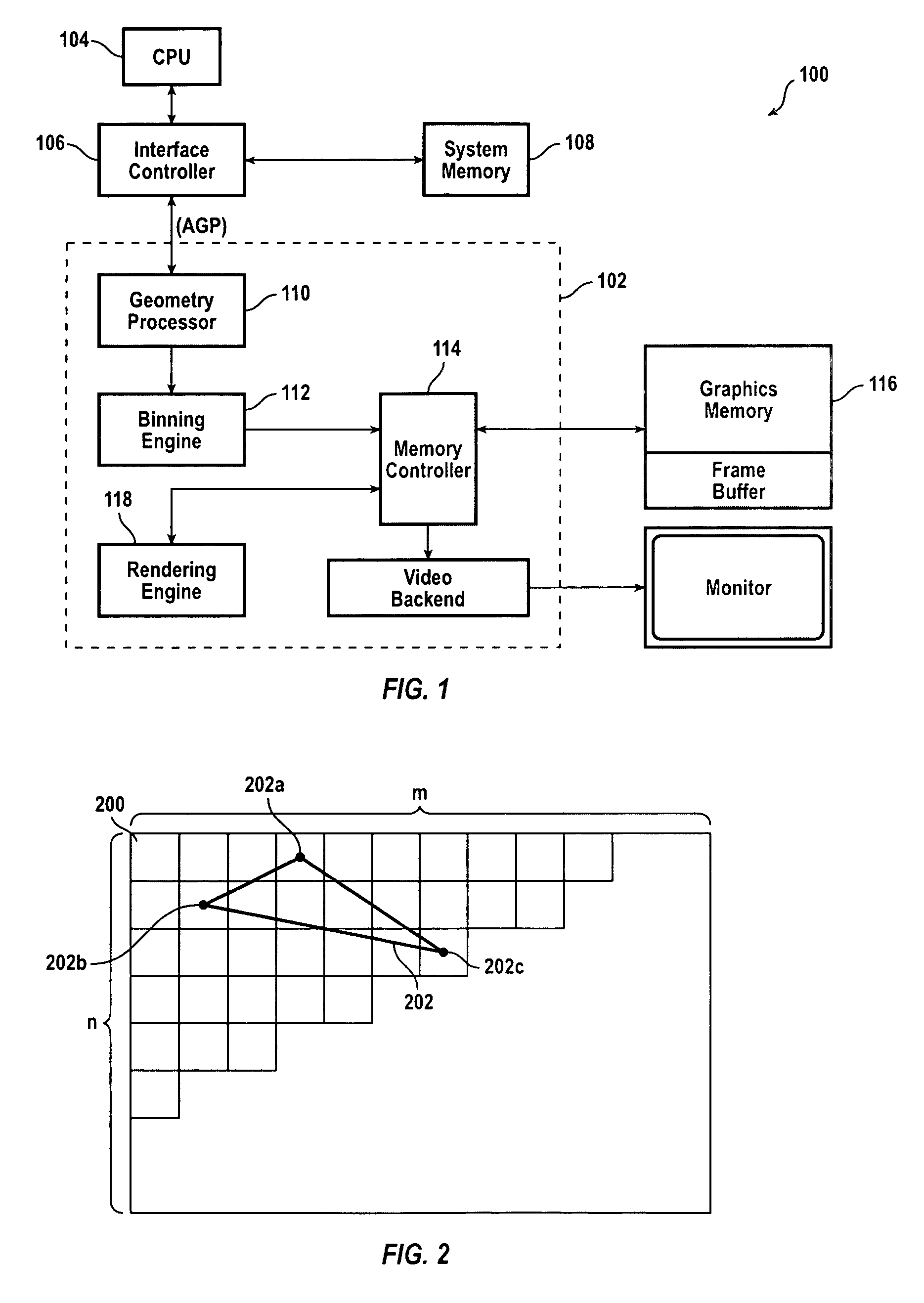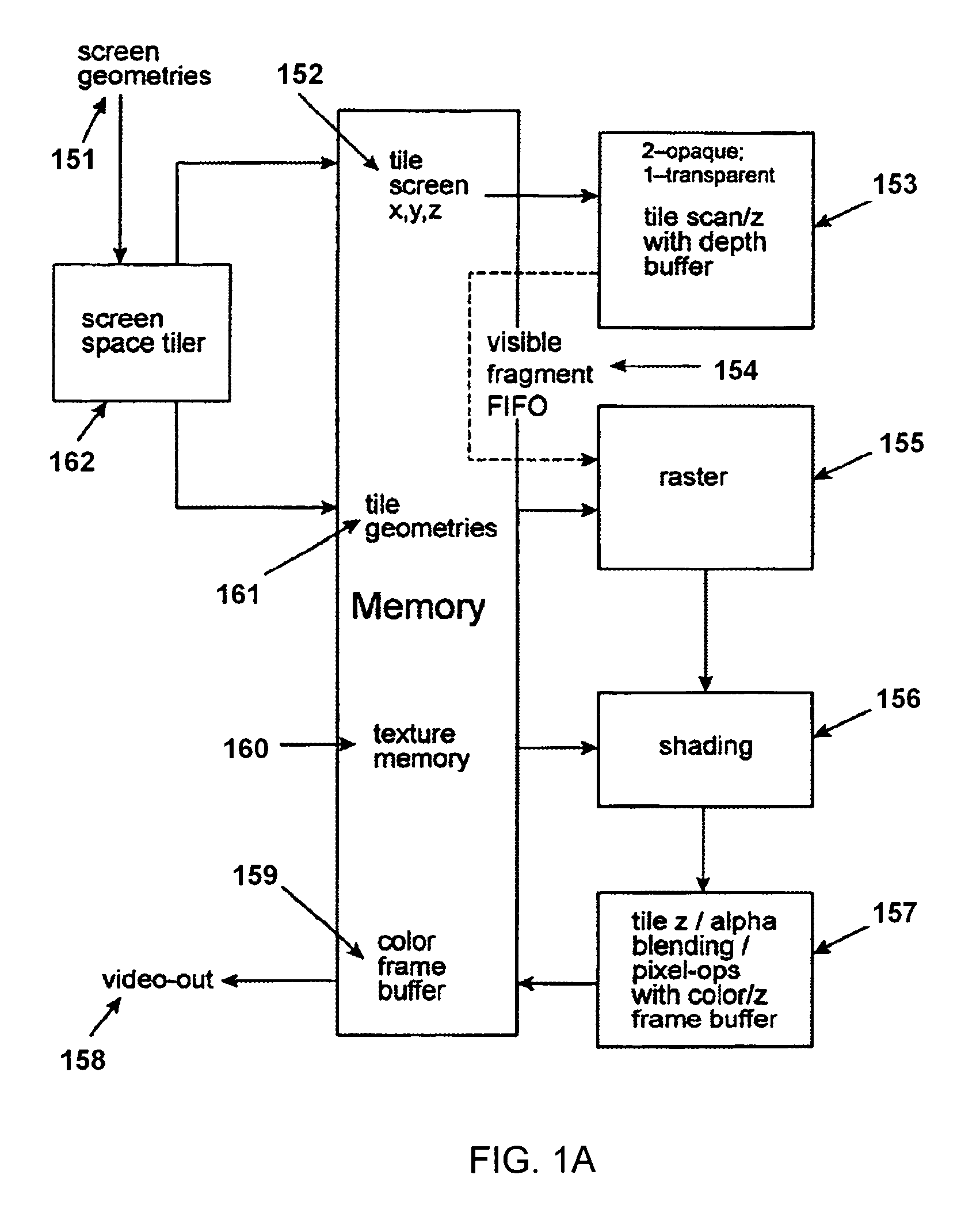Demand-based memory system for graphics applications
- Summary
- Abstract
- Description
- Claims
- Application Information
AI Technical Summary
Benefits of technology
Problems solved by technology
Method used
Image
Examples
Embodiment Construction
[0021]FIG. 1 is a block diagram of a graphics system 100 that processes graphics data in accordance with an embodiment of the present invention. A graphics processor 102 is coupled to a central processing unit (CPU) 104 by a bus, such as an advanced graphics protocol (AGP) bus, via an interface controller 106. System memory 108 also couples to CPU 104 via interface controller 106. Graphics processor 102 includes a geometry processor 110 that receives graphics data from CPU 104. Graphics data typically includes geometry data and mode data. Geometry data comprises information relating to various polygons (e.g., triangles, parallelograms, rectangles, circles, etc.) which are processed to produce a complete image. Geometry data specifies, for example, the vertices (e.g., in X,Y,Z coordinates) and color (e.g., red-green-blue (RGB)) combinations for various polygons. Mode data comprises information relating to various modes affecting the appearance of one or more geometries when displayed...
PUM
 Login to View More
Login to View More Abstract
Description
Claims
Application Information
 Login to View More
Login to View More - R&D
- Intellectual Property
- Life Sciences
- Materials
- Tech Scout
- Unparalleled Data Quality
- Higher Quality Content
- 60% Fewer Hallucinations
Browse by: Latest US Patents, China's latest patents, Technical Efficacy Thesaurus, Application Domain, Technology Topic, Popular Technical Reports.
© 2025 PatSnap. All rights reserved.Legal|Privacy policy|Modern Slavery Act Transparency Statement|Sitemap|About US| Contact US: help@patsnap.com



